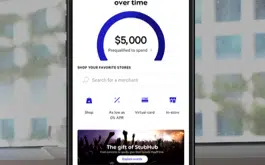How to improve the U.S. payment system? Figure out a way to make electronic payments faster and more secure, as well as a system that would connect various closed-loop payment networks with hundreds of millions accounts. And reduce regulation, too.
Those were some of the ideas bandied about Thursday at one of six “town halls” the Federal Reserve Banks are holding around the country this month to collect input on making U.S. payments more competitive with the rest of the world, where mobile devices, chip cards and nimble operational systems are surpassing the legacy systems that many in the financial industry believe prevent America’s payments from being all they could be.
The Fed in September issued a document putting forth a host of ideas and questions about how the nation should improve its payment system over the next 10 years. That so-called consultation paper is the context for the recent meetings at Federal Reserve banks, Thursday’s being the third and held at the Federal Reserve Bank of Chicago.
The “strategic thrust” of the document is safety and security, speed and efficiency, but those broad concepts are “the mom and apple-pie part” upon which everyone agrees, said meeting moderator Sean Rodriguez, a senior vice president at the Chicago Fed. Drill down into the specifics and you’ll soon encounter the fissures that separate interest groups in the payment system and make consensus on how to achieve modernization difficult.
For example, some in the audience of about 50 said that large banks with big wire-transfer businesses last year killed a plan by automated clearing house governing body NACHA to speed up ACH payments, which are much less profitable than wire transfers.
“Until we figure that one out, I think there’s always going to be that unspoken impediment,” said one man in the audience, most of whom which was comprised of bankers but also included representatives of tech companies, consulting firms and other industry firms.
One intriguing idea the Fed threw out for discussion was usage of data technology to connect various closed-loop payment systems such as PayPal, Fiserv Inc.’s Popmoney person-to-person service and others so that any consumer could send a real-time payment to another person without having to join a particular service. But the notion of creating an overarching database with consumer credentials in the various services “sounds a little scary to me,” said Rodriguez.
Still, the idea is worth further investigation, some attendees thought. “You have to have a third party or regulatory body that keeps the vault,” said one.
One concept most attendees agreed on was that government should back off as financial institutions, processors and vendors search for ways to improve electronic payments. “The regulatory demands are taking all our money,” said one banker.
Nearly everyone also agreed that security is a very high priority, but protecting data shouldn’t come at the price of delayed payments or reduced services that frustrate customers. “A lot of the things we’ve had to do to prevent account takeover are not necessarily client-friendly,” said a banker.
The Fed is taking comments on the document until Dec. 13 through the FedPaymentsImprovement.org Web site or by emailing comment@FedPaymentsImprovement.org. Then, the Fed will synthesize the input for publication as a white paper for release next summer. Rodriguez acknowledged that many people might not regard the concept of a white paper as very exciting, but added: “We’re hoping that what’s in the paper will be exciting.”
The next town hall is Friday at the Federal Reserve Bank of San Francisco followed by meetings Nov. 18 at the Boston Fed and Nov. 20 at the Dallas Fed.




